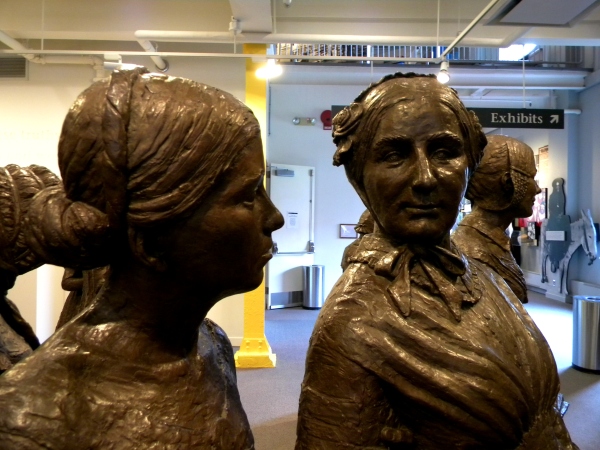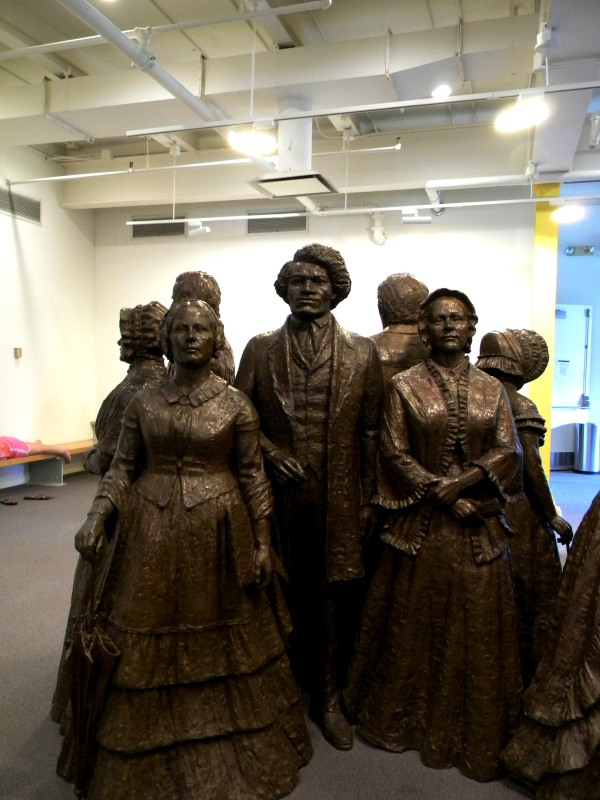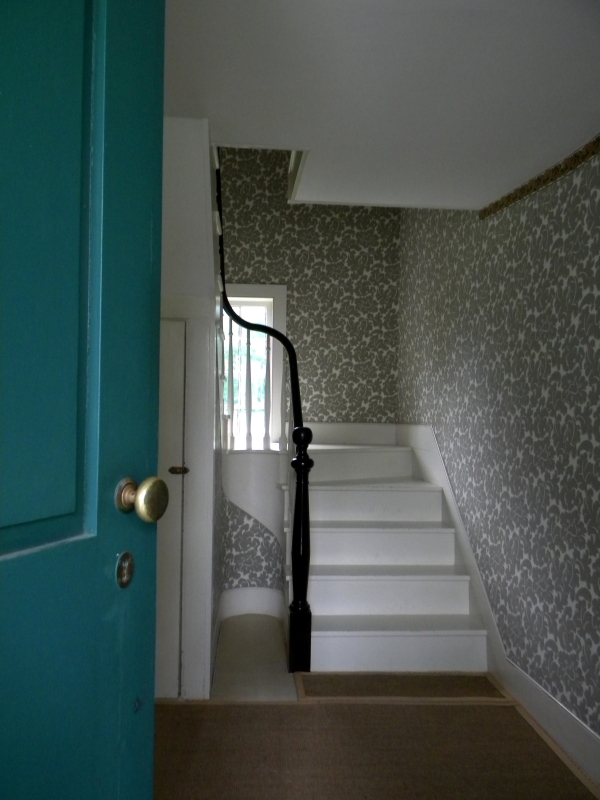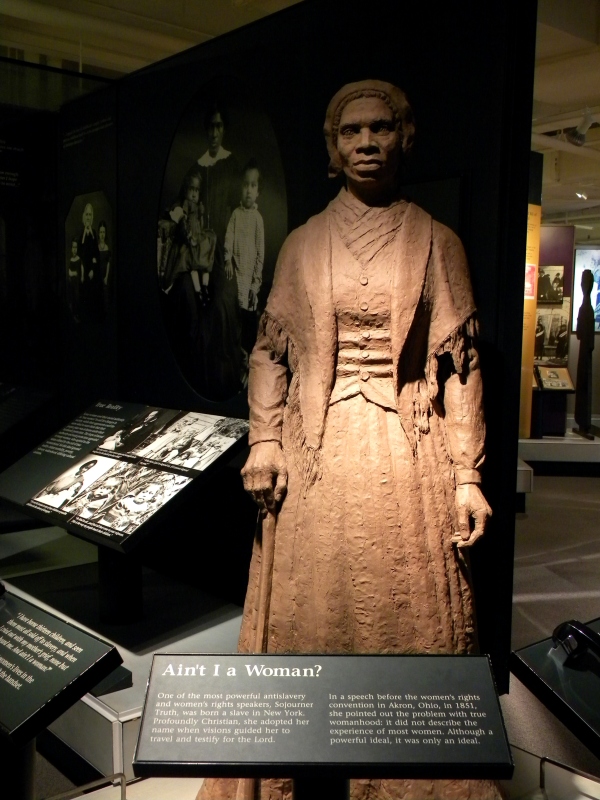After taking a hiatus following the end of the spring semester, I thought I would dive back in by posting some pictures from a stop I made on my drive back from New Hampshire this month: Women’s Rights National Park in Seneca Falls, New York.
The park encompasses several sites, including the historic Wesleyan Methodist Church where first wave “feminists” Elizabeth Cady Stanton and Lucretia Mott held the first Women’s Rights Convention in 1848, Elizabeth Cady Stanton’s Seneca Falls home, and the home of the McClintocks, the Quaker husband and wife team who hosted Stanton and Mott and whose home also served as a stop on the Underground Railroad, assisting escaped slaves. In addition, the Visitor’s Center offers wonderful displays documenting the history of the Women’s Rights movement in the U.S.

A fountain-wall situated between the Women’s Rights NAtional Park Visitor’s Center and the historic Wesleyan Methodist Church features the entirety of the Declaration of Sentiments, the document read aloud at the convention, which was based on the American Declaration of Independence.
Both our tour guide, who gave wonderfully detailed and provocative talks, and the Visitor’s Center itself approached this history from an appropriately feminist angle, reflecting on issues of race/ethnicity – for example, in addressing the overlap and some of the tensions between the abolitionist and early women’s rights movements – class, and also religion (e.g., the Quaker community’s support of human rights, which encompassed abolition as well as women’s rights).

Bronze statues representing the First Wave of women’s rights activists (including both women and men) in the lobby of the Visitor’s Center. The artist, Lloyd Lillie and two assistants sculpted the statues out of clay, which were then cast in bronze.

Another cluster, featuring former slave and human rights activist Frederick Douglass (center), and Elizabeth Cady Stanton (left), one of the organizers of the 1848 convention.

View through the front door of Elizabeth Cady Stanton’s Seneca Falls home, and the stairs where Amelia Bloomer demonstrated her bloomers, illustrating for Stanton how she could easily ascend the stairs with both a baby and a lantern in her arms without fear of tripping on her skirts. Bloomer also published a paper titled The Lilly, which Stanton write for under the pen name Sunflower.

A statue of Sojourner Truth, whose famous speech “Aint I a Woman” highlights how race affects how we recognize womanhood and femininity (to read her speech, check out the link under Readings to the right).
In addition to the Women’s Rights National Park, the Seneca Falls Visitor’s Center, located just a couple of blocks from the Wesleyan Church, has displays exploring the role of women in the many industries of Seneca Falls, including the long-standing Seneca Knitting Mills, which building can be seen from the rear windows of the Visitor’s Center

